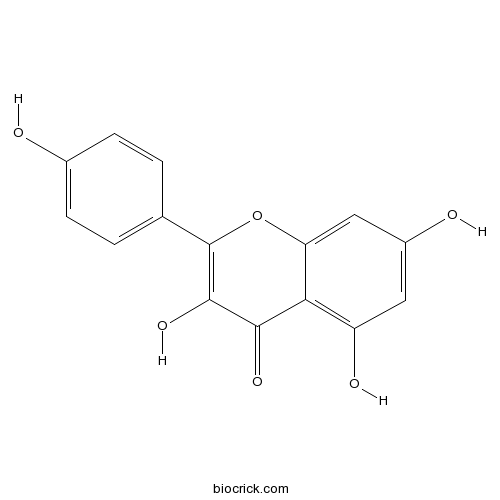Nephelium lappaceum
Nephelium lappaceum
1. The products in our compound library are selected from thousands of unique natural products; 2. It has the characteristics of diverse structure, diverse sources and wide coverage of activities; 3. Provide information on the activity of products from major journals, patents and research reports around the world, providing theoretical direction and research basis for further research and screening; 4. Free combination according to the type, source, target and disease of natural product; 5. The compound powder is placed in a covered tube and then discharged into a 10 x 10 cryostat; 6. Transport in ice pack or dry ice pack. Please store it at -20 °C as soon as possible after receiving the product, and use it as soon as possible after opening.
Natural products/compounds from Nephelium lappaceum
- Cat.No. Product Name CAS Number COA
-
BCN5653
Kaempferol520-18-3
Instructions

Polyphenolic content, in vitro antioxidant activity and chemical composition of extract from Nephelium lappaceum L. (Mexican rambutan) husk.[Pubmed: 29268979]
To determinate the recovery of total polyphenolic compounds content, in vitro antioxidant activity and HPLC/ESI/MS characterization of extract from Nephelium lappaceum L. (Mexican rambutan).
Geraniin extracted from the rind of Nephelium lappaceum binds to dengue virus type-2 envelope protein and inhibits early stage of virus replication.[Pubmed: 29162124]
The rapid rise and spread in dengue cases, together with the unavailability of safe vaccines and effective antiviral drugs, warrant the need to discover and develop novel anti-dengue treatments. In this study the antiviral activity of geraniin, extracted from the rind of Nephelium lappaceum, against dengue virus type-2 (DENV-2) was investigated.
Anti-Diabetic Effects of Phenolic Extract from Rambutan Peels (Nephelium lappaceum) in High-Fat Diet and Streptozotocin-Induced Diabetic Mice.[Pubmed: 28933738]
Recent studies have shown that rambutan peel phenolic (RPP) extract demonstrate high antioxidant and antiglycation activities in vitro and in vivo. This study further evaluated the anti-diabetic activity of RPP in a mouse model of Type II diabetes induced by streptozotocin combined with high-fat diet. Results showed that RPP increased the body weight and reduced the fasting blood glucose level of the diabetic mice. RPP significantly reduced the serum levels of total cholesterol, triglyceride, creatinine, and glycated serum protein in diabetic mice in a dose-dependent manner. Glycogen content in mice liver was recovered by RPP, which further increased the activity of superoxide dismutase and glutathione peroxidase and reduced lipid peroxidation in diabetic mice. Histological analysis showed that RPP effectively protected the tissue structure of the liver, kidney, and pancreas. In addition, RPP decreased the mesangial index and inhibited the expression of TGF-β in the kidney of diabetic mice.
Effect of surfactant concentration and solidification temperature on the characteristics and stability of nanostructured lipid carrier (NLC) prepared from rambutan (Nephelium lappaceum L.) kernel fat.[Pubmed: 28697547]
Nanostructured lipid carrier (NLC) was fabricated from rambutan (Nephelium lappaceum L.) kernel fat stabilized with Tween 80 in this present work. The influence of the Tween 80 concentration (0.025, 0.05, 0.1, 0.2, 0.5 and 1.0wt%) and solidification temperature (5 and 25°C) on the characteristics and stability of the NLC were investigated. The results showed that an increase in the Tween 80 concentration caused decreased zeta-potential (ζ-potential) and particle size (Z-average) with no significant effect on the polydispersity index (PDI). Lipid particles in the NLC at all Tween 80 concentrations had a tendency to grow and the PDI tended to increase due to Ostwald ripening upon storage over 28days. At least 0.2wt% Tween 80 concentrations could be used to stabilize 1wt% rambutan NLC. The solidification temperature affected the microstructure, melting behavior and stability of rambutan NLC. Pre-solidification at 5°C could create stable NLC with monodispersed-spherical lipid particles. Consequently, these stable NLC particles produced from rambutan kernel fat may serve as useful carriers for the delivery of bioactive lipophilic nutraceuticals.
Current trends of tropical fruit waste utilization.[Pubmed: 27246698]
Recent rapid growth of the world's population has increased food demands. This phenomenon poses a great challenge for food manufacturers in maximizing the existing food or plant resources. Nowadays, the recovery of health benefit bioactive compounds from fruit wastes is a research trend not only to help minimize the waste burden, but also to meet the intensive demand from the public for phenolic compounds which are believed to have protective effects against chronic diseases. This review is focused on polyphenolic compounds recovery from tropical fruit wastes and its current trend of utilization. The tropical fruit wastes include in discussion are durian (Durio zibethinus), mangosteen (Garcinia mangostana L.), rambutan (Nephelium lappaceum), mango (Mangifera indica L.), jackfruit (Artocarpus heterophyllus), papaya (Carica papaya), passion fruit (Passiflora edulis), dragon fruit (Hylocereus spp), and pineapple (Ananas comosus). Highlights of bioactive compounds in different parts of a tropical fruit are targeted primarily for food industries as pragmatic references to create novel innovative health enhancement food products. This information is intended to inspire further research ideas in areas that are still under-explored and for food processing manufacturers who would like to minimize wastes as the norm of present day industry (design) objective.
Physicochemical Properties of Defatted Rambutan (Nephelium lappaceum) Seed Flour after Alkaline Treatment.[Pubmed: 27043520]
Rambutan seeds were subjected to SC-CO₂ extraction at 35 MPa, 45 °C to obtain defatted rambutan seed flour. Its physicochemical properties before and after treatment with alkali solution using 0.075 N NaOH were investigated. Alkali-treated flour had a significant increment in bulk density, swelling power, water adsorption capacity, emulsion capacity and stability but a reduction in turbidity, solubility and oil absorption capacity. Pasting measurements showed peak viscosity, breakdown, setback and final viscosity increased significantly for the alkali-treated flour, while pasting temperature decreased. The alkaline treatment decreased the least gelation concentration, but increased the apparent viscosity.


